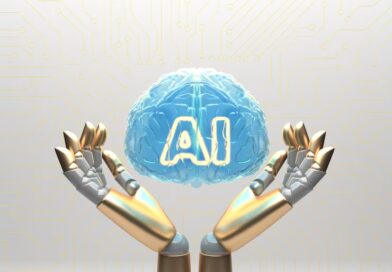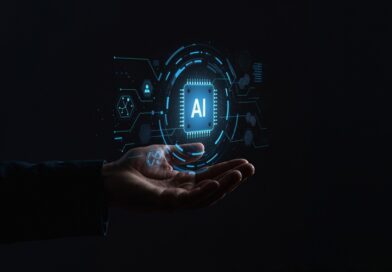AI experts establish the “North Star” for domestic robotics field
While any one of those tasks is already highly complex in its own right, imagine the challenge of creating a single robot that can do all of these things, creating these benchmarks now, before the field has evolved too far, will help to set up potential common goals for the community.” Jiajun Wu, assistant professor of computer science and a senior author on the paper.
A monumental task
Imagine the multiple problems a robot must overcome to achieve a simple task like cleaning a countertop. The robot not only has to perceive and understand what a countertop is, where to find it, that it needs cleaning, and the counter’s physical dimensions, but also what tools and products are best used to clean it and how to coordinate its motions to get it clean. The robot would then have to determine the best course of action, step by step, needed to clean the counter. It even requires a complex understanding of things humans think nothing of, such as what tools or materials are “soakable” and how to detect and declare a countertop “clean.” In BEHAVIOR, this level of complexity is achieved in 100 activities performed in multiple different simulated houses. Each of these steps (navigation, search, grasping, cleaning, evaluating) may require hours or even days of training in simulation to be learned far beyond the capabilities of current autonomous robots. “Deciding the best way to achieve a goal based on what the robot perceives and knows about the environment and about its own capabilities is an important aspect in BEHAVIOR,” Roberto Martin-Martin, a postdoctoral scholar in computer science who worked on the planning aspects of the benchmark. “It requires not only an understanding of the environment and what needs to be done, but in what order they need to be done to achieve a task. All this for 100 tasks in different environments!”Sim to real
In creating the BEHAVIOR benchmark, the team, led by Stanford Institute for Human-Centered AI co-director and computer scientist Fei-Fei Li, together with experts from computer science, psychology, and neuroscience, has established a “North Star,” a visual reference point by which to gauge the success of future AI solutions, which might also be used to develop and train robotic assistants in virtual environments that are then migrated to operate in literal ones a paradigm known in the field as “sim to real.” “Making this leap from simulation to the real world is a nontrivial thing, but there have been a lot of promising results in training robots in simulation and then putting that same algorithm into a physical robot,” Sanjana Srivastava, a doctoral candidate in computer science who specializes in the task definition aspects of the benchmark. “I got involved specifically to see how far we can push simulation technology,” Michael Lingelbach, a doctoral candidate in neuroscience. “Sim to real is a big area in robotic research and one we’d like to see develop more fully. Working with a simulator is just a much more accessible way to approach robotics.” Next up, the BEHAVIOR team hopes to provide initial solutions to the benchmark while extending it with new tasks not currently benchmarked. According to the team, that effort will require contributions from the entire field: robotics, computer vision, computer graphics, cognitive science. Other researchers are invited to try their own solutions; to that end, the current version of BEHAVIOR is open source and publicly available at behavior.stanford.edu. “If you think about these one hundred activities at the level of detail we provide, you begin to comprehend how difficult and important benchmarking is,” Chengshu Li, a doctoral candidate in computer science. “In that regard, BEHAVIOR is not final. We will continue to iterate and add new tasks to our list.”See More

Faster Insights with Splunk AI Assistant for SPL: Now More Personal Than Ever
Splunk AI Assistant for SPL has revolutionized how users interact with Splunk’s powerful Search Processing Language (SPL), making data analysis more

From Complexity to Clarity: Leveraging AI to Simplify Fraud, Waste, and Abuse Investigations at Every Level
Fraud, waste, and abuse pose significant challenges across all sectors, from corporate enterprises to federal institutions. With increasing scrutiny from

Beyond the horizon: Navigating the bridge between today’s tech and tomorrow’s AI
On the calendar, a year has 365 days. But in the world of AI, it often feels like every month

Cyber Threats 2025: Dark Web Hacks, AI Malware, and Ransomware Take Center Stage
As cyber threats continue to evolve, 2025 marks a turning point for businesses and individuals facing increasingly sophisticated attacks. Hackers
See More Blogs

Hexaware Teams Up with Fixie.ai to Power Voice AI for Smarter Enterprise Operations
Hexaware Technologies, a global provider of IT solutions and services, has announced a new partnership with Fixie.ai, a market leader in

Caspia Technologies Collaboration to Enhance Security Verification in Siemens’ Questa One With Caspia’s Generative AI Security Platform
Caspia Technologies today announced a collaboration with Siemens Digital Industries Software to expand security verification in Siemens Questa™ One software

STELLA AI Now Available in Microsoft Azure Marketplace
Global partner STELLA™ AI – the trusted, best-in-class conversational AI platform designed for dealerships by automotive experts announced today the availability of




